Saskatoon

Honeywood:
16 mm berries with 9-15 berries per cluster. Deep blue when ripe. Full tangy flavor. Blooms a few days later than other varieties Saskatchew
an selection. 2.5m (8 ft) Upright and spreading. Very productive. Produces fruit earlier than other selections. Fruit ripens somewhat unevenly. Matures late
JB30:
15mm berries. Deep blue when ripe. Exceptional flavor. Average bloom time. Highest shoot growth (21.4 cm). Saskatchewan selection. 3m (10 ft) Upright and spreading. Consistently high production. Very uniform ripening within cluster.
Rasberry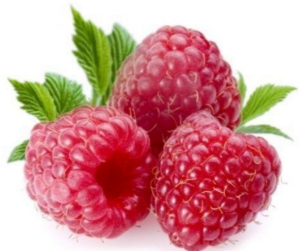
Boyne Origin: Manitoba, 1960 (Chief x Indian Summer)
Season: Early. Size Small-Medium (1.9g) Medium to tall canes, which are spiny with many suckers. Dark, somewhat soft berries with soft skin. Good flavor. Good for freezing. Resistant to yellow rust. Tolerant of crown gall. Very susceptible to anthracnose. Susceptible to fire blight.
Strengths: Very productive. Good flavor. Winter hardy.
Cherry
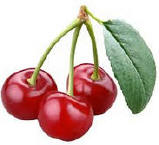
Black Cherry fruit size is smaller and its sugar content is lower than the Romance Series, it has the big advantage of being the first cherry to ripen each season. tart but a wonderful flavor very dark colour of CJ fruit goes all through the cherry. CJ makes a very dark rich looking juice or wine.
When used in dairy products it gives maximum colour for a sour cherry.
Carmine Jewel Fruit Very high flesh to pit ratio (small pits)
Romeo
a little bit sweeter Dark Red Fresh eating type: excellent quality Also good for processing One of the best for fresh eating flavor 5.0g fruit High sugar content (up to 20 brix) Pits are large enough for old fashioned crank pitters
Origin: Manitoba, 1960 (Chief x Indian Summer)
Season: Early. Size Small-Medium (1.9g) Medium to tall canes, which are spiny with many suckers. Dark, somewhat soft berries with soft skin. Good flavor. Good for freezing. Resistant to yellow rust. Tolerant of crown gall. Very susceptible to anthracnose. Susceptible to fire blight.
Strengths: Very productive. Good flavor. Winter hardy.
Haskap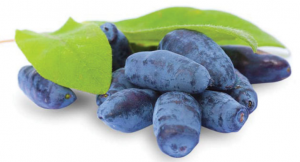
A bitter and tart but an outstanding flavor. great for sauces and jams.The Japanese name for Haskap is Lonicera caerulea. It has also been known as ‘Blue Honeysuckle’, ‘Honeyberry’, ‘Edible Honeysuckle’ and ‘Sweet berry honeysuckles’. The fruit is an oblong blue berry about 1 cm diameter. Haskap is a deciduous shrub growing 1-2 m tall.
Goosberries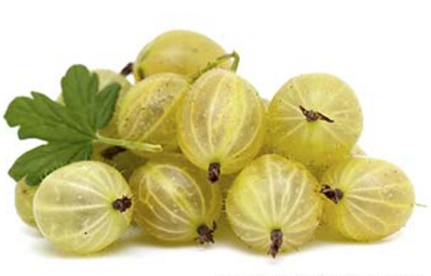
Virtually thorn less variety that produces an abundant yellow-green fruit that turns pink blush color when ripe. They are great for jams etc.Small and firm but sometimes ribbed and translucent, gooseberries are a unique little plant-based food growing on relatively small, thorny bushes. Although their history is rooted in Europe, gooseberries were cultivated in Asia and Africa before the British began developing new varieties in at least the sixteenth century. There are now around 2,000 cultivars and two main gooseberry types: American and European (Ribes uva-crispa), which are larger and said to be tastier. They’re from the same botanical family as currants, and grow wild and prolific in places like North America and Siberia.
Plums
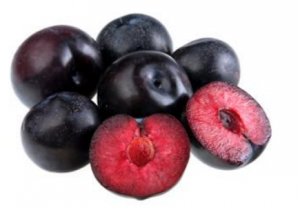
Great for picking and eating or jams etc.
There are few fruits that come in such a panorama of colors as the juicy sweet tasting plum. The plum season extends from May through October with the Japanese varieties first on the market from May and peaking in August followed by the European varieties in the fall.
Plums belong to the Prunus genus of plants and are relatives of the peach, nectarine and almond. They are all considered “drupes,” fruits that have a hard stone pit surrounding their seeds.
Prunes are the dried version of European plums. In the United States, through, you may not see the term “prunes” used as frequently as before, as this fruit items recently had its name officially changed to “dried plum.” Sweet with a deep taste and a sticky chewy texture, prunes are not only fun to eat but they are also highly nutritious. As with other dried fruits, they are available year round.
Rubarb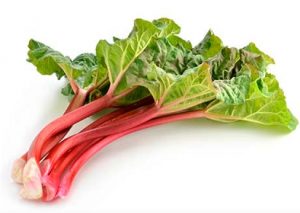
Commonly, it is stewed with sugar or used in pies and desserts, but it can also be put into savory dishes or pickled. Rhubarb can be dehydrated and infused with fruit juice. In most cases, it is infused with strawberry juice to mimic the popular strawberry rhubarb pie.
Rhubarb root produces a rich brown dye similar to walnut husks. It is used in northern regions where walnut trees do not survive. We have 4 different varities German Red, German Wine, Strawberry Red and Canada Red





